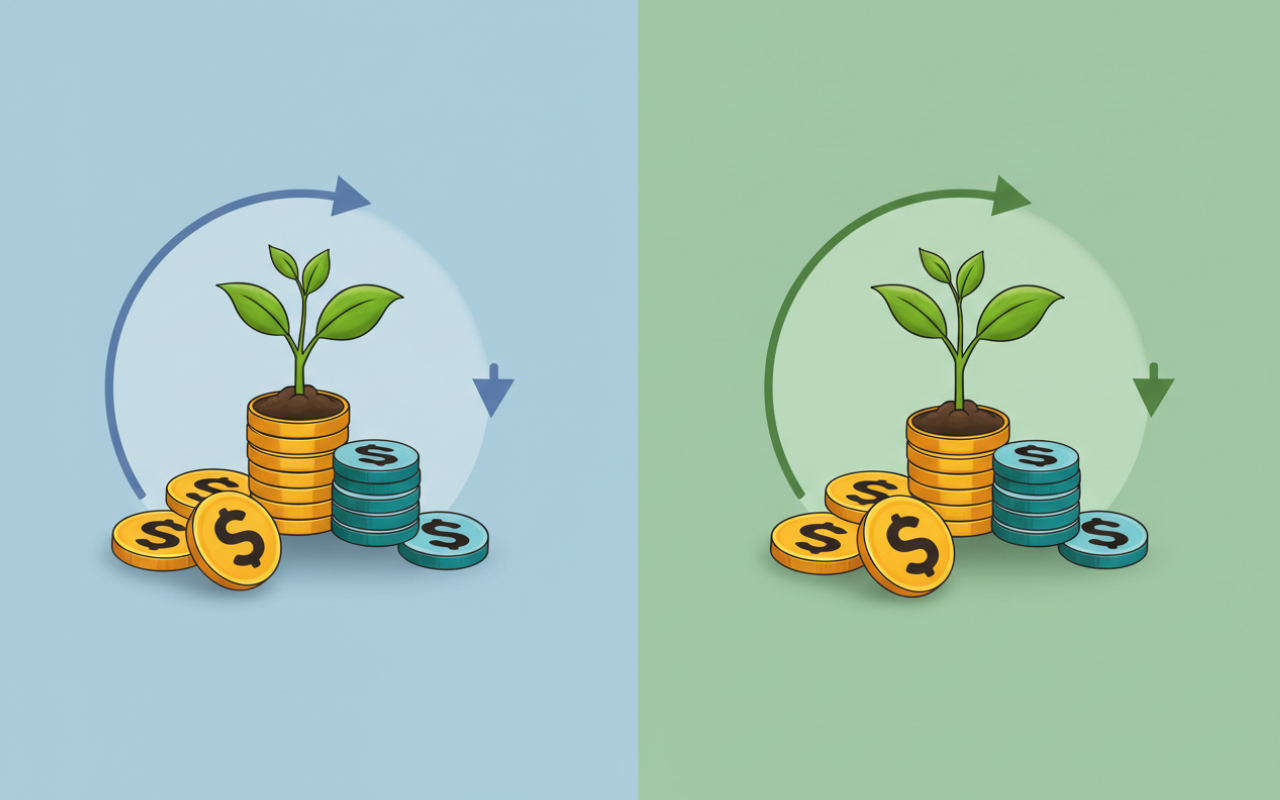Staking can be a reliable way to expand your crypto investments, yet not all staking coins are created equal. Cardano is an impressive PoS network that rivals Ethereum. Its scalability and low fees make it an attractive investment choice. Polkadot offers blockchain interoperability with a generous rewards rate for validators, making it an attractive long-term investment choice.

1. Cardano (ADA)
Cardano is a decentralized blockchain that enables its holders to earn rewards by actively contributing to its proof-of-stake consensus mechanism, with these rewards distributed as newly issued ADA tokens as incentives for security and governance participation on the platform.
Cardano offers more than its staking model alone, its peer-reviewed code and scientific philosophy provide superior security, as well as a well-planned architecture that resolves the blockchain trilemma of scalability, security, and decentralization. Furthermore, their Plutus language eliminates preventable bugs making this one of the safest smart contract platforms currently available. Staking Cardano can be accomplished either via reliable crypto exchanges or direct with staking pool operators, with direct staking typically providing greater security as users retain control of their private keys and assets.
2. Tezos (XTZ)
Tezos offers the best of both worlds: an exceptionally secure blockchain and an adaptable smart contract platform. Additionally, its revolutionary self-amending protocol enables it to upgrade itself gradually over time without risking network forks.
Tezos’ security is provided by an Liquid Proof of Stake (LPoS) consensus mechanism that allows holders of the XTZ tokens to vote on which bakers will validate new blocks on the Tezos blockchain. Tezos blockchain features a robust ecosystem, including support for DeFi, NFT and enterprise solutions. Furthermore, its energy consumption is far lower compared to Proof-of-Work blockchains compared with its environmental friendliness.
3. Polkadot (DOT)
Polkadot is a programmable blockchain capable of connecting different blockchains and services together, such as linking an organic supply chain blockchain with DeFi’s lending platform. Polkadot’s native currency, the DOT token is used for staking to secure and contribute to consensus, as well as transaction fees and rewards payment. Furthermore, its use also enables governance by giving holders voting power on proposed changes or upgrades for Polkadot network.
Polkadot offers an attractive staking reward structure, especially for long-term investors. However, like other cryptocurrencies such as Ethereum or Ripple, Polkadot should be seen as part of an overall portfolio that includes other forms of investments to reduce volatility risk.
4. Tezos (XTZ)
Tezos is an innovative blockchain network, distinguished from its peers by offering users the freedom to customize its code without risk of hard forking. Furthermore, holders of Tezos tokens (XTZs) have voting power for protocol upgrades ensuring adaptability and security.
Tezos blockchain is protected through a delegated proof-of-stake consensus mechanism in which users stake tokens to validate transactions and suggest protocol changes, while bakers are rewarded for their contributions, rewarding good behavior while guaranteeing network security. Keep an eye on key metrics such as market capitalization, trading volume, circulating supply and maximum supply to assess XTZ’s health and potential. Keep your tokens safe by using Ledger or Trezor wallets. These offer maximum protection from online threats.
5. Solana (SOL)
Staking investments can provide an excellent way to generate consistent passive income over months or years, though they do carry low risks and require patience from investors. Solana uses Proof-of-History and Tower BFT technologies to deliver unparalleled scalability and energy efficiency, enabling it to process transactions rapidly at reduced costs while upholding network security.
To stake Solana, first install and configure a Solana wallet with the Staking Option selected. Next, delegate your tokens to a validator of your choosing, be sure to research each option thoroughly and select a reputable validator that offers reasonable fees, uptime and performance metrics.
6. Sei (SEI)
The Sei Ecosystem provides a specialised layer 1 blockchain designed for trading and decentralized finance (DeFi) applications. Boasting built-in order book infrastructure and high throughput capabilities, Sei’s platform addresses speed, liquidity, and front running protection, providing a solution for the Exchange Trilemma.
Twin Turbo consensus on the blockchain increases efficiency and reliability by shortening block times and transaction finality while optimizing trading performance. Furthermore, market-based parallelization and frequent batch auctioning feature to prevent frontrunning.
Its spec-agnostic matching engine enables developers to select how they wish to represent their assets while offering maximum flexibility. Meanwhile, its native price oracle reduces dependence on external services by offering reliable prices through a self-regulating mechanism.
7. ATOM (ATOM)
The user-friendly platform offers a range of crypto assets that users can stake to generate annual percentage rates (APRs) between 12% to 24%+ compound interest, with stable coins producing the highest returns. PKOIN provides both real world utility and the potential of high staking returns, making it an attractive asset to diversify portfolios with. Furthermore, investors have the option of receiving their rewards either in form of real assets or NEXO tokens, further lowering counterparty risk while expanding potential investment returns.
Staking offers a safe and low-risk alternative to mining that doesn’t require special hardware. Before investing, however, it’s essential that research be conducted on which coins offer the highest returns as staking investments. Additionally, understanding the staking process, including lock-up periods and potential fees, can help maximize your earnings. It’s also wise to diversify your staking portfolio to reduce risks and ensure a more stable return over time.
8. Hydra (HAT)
Crypto staking is one of the best passive income-earning strategies, providing an opportunity to contribute towards protecting blockchain networks while reaping regular cryptocurrency staking rewards on investments made. Staking can be risky, so before making any decisions about staking rewards it’s essential that you consider your investment goals and risk tolerance before taking any steps. Plus rewards could vary greatly depending on network conditions and number of coins delegated by delegators.
Staking can be complicated by the fact that most platforms don’t allow for full accessibility of staked assets. Some platforms, however, have made the process simpler by offering attractive staking rewards and flexible liquidity solutions. This means users can enjoy the benefits of staking without feeling locked into rigid terms or sacrificing access to their funds. Additionally, as the staking ecosystem evolves, more platforms are prioritizing user-friendly interfaces and transparent processes to make staking more accessible to everyone, even beginners.
9. Binance Coin (BNB)
Purchase of BNB can be accomplished easily through various cryptocurrency exchanges, but for optimal security and management purposes it’s recommended to store it in a hardware wallet for best results. BNB holders enjoy numerous benefits, including discounted trading fees on Binance exchange and participation in token sales.
Staking cryptocurrency provides reliable passive income with up to 90% APY potential. Backed by strong community support, presale success, and staking rewards, BTFD may increase in value. However, its long-term success will depend on how well Binance ecosystem performs, specifically in regards to regulatory risks and slow growth in cryptocurrency market.


